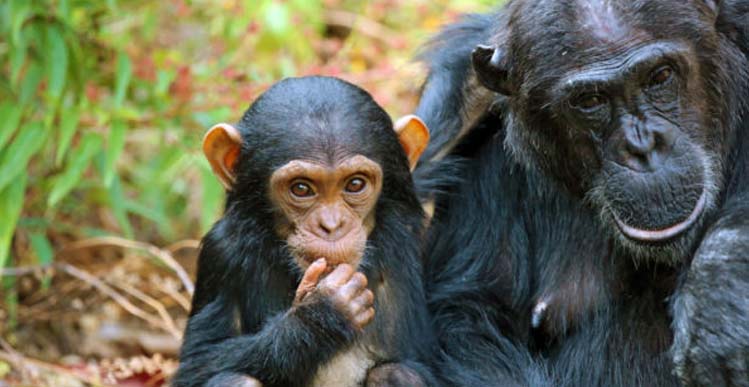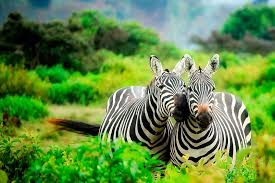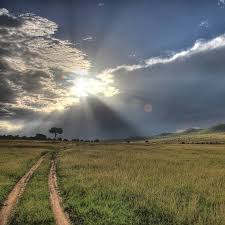Overview
Size: 1,613 sq km (623 sq miles)
Established: 1965 the first research camp was set up, officially gazetted in 1985
Distance from Arusha: to Kigoma it is roughly 1,020 km (633 miles). From Kigoma to Mahale – 130 km (80 miles).
Located in the remote western part of Tanzania, Mahale Mountains National Park is one of the most picturesque places in Tanzania. The park borders Lake Tanganyika, one of the oldest and deepest lakes in the world. Getting to the park is an adventure as it is accessible only by air and boat. There are no roads in the park, only forest paths through the lush vegetation. This park is a hiker’s paradise, but most importantly it is a chimpanzee paradise. Mahale is a haven for primates, with chimpanzee trekking one of the prime reasons for visits. The park is teeming with life, rivers and waterfalls are everywhere and around the shoreline of the lake, are the most unspoilt white sandy beaches anyone could imagine.
Best Time to Visit
The best time for a visit is in the dry season, which lasts from June to September. In June, July and August, it scarcely ever rains with aquatic dust offs ending by end of May and sprinkles starting around early October. Temperatures are between lows of 64 F (18 C) and highs of 86 F (30 C) degrees. The chimpanzees can usually be found in mid to large groups on the lower mountain slopes during the dry period, and have been known to wander amidst the foliage close to the shores of Greystoke and Kungwe Beach Lodge. The sequential wet season runs from November until April, and is hotter and more humid, necessitating precautions against both mosquitoes and tsetse flies. You may wish to bring anti-insect sprays and malaria prophylactics. Avoid dark colored or blue clothes which attract the tsetse fly. Temperatures range from 68 F (20 C) to 82 F (28 C) degrees in the wet. Humidity can often be over 80%. Chimpanzees do not range far in these conditions, but tend to stick to the upper slopes where they find food, even hunting their cousins, the red colobus to indulge in their omnivorous tastes. Particularly heavy rains make the lower slopes slippery and very muddy. The chimps find that going higher up is easier in the wet. Kungwe Beach Lodge is closed from late-February until mid-May while Greystoke closes a month later and opens in June since logistics become exceedingly difficult since the terrain of Mahale is treacherous during these months. Since these twin accommodations close at this time of year, it makes it very difficult to find somewhere to stay. There is some financial advantage to mid-season visits as accommodation costs slightly drops; however, logistical travel is prohibitively costly and time-consuming as the peak season.
It is never easy to find accommodation at any time, although, even at high season, there are rarely more than 50 visitors at a time in the entire 1613 square kilometers (623 sq. miles) of land covered by Mahale National Park. Less than 100 sq. km (38 sq. miles) of the park is aquatic. Peak time for bird-watchers is between November and April when dauntless twitchers try to spot new species. The recorded list names more than 355 indigenous and migrant birds, but it is thought there may be more than 500 species throughout the many diverse environments – mostly inaccessible. Many are endangered sub-species endemic to the area. There is better visibility in Kabezi in the north where the woodland is open, rather than forested areas where it is harder to spot the birds which may be identified only by their calls. But you could truly call this authentic exploratory vacation in Tanzania a genuine voyage of discovery. This is also the time to appreciate over 300 butterfly species and some of over a thousand plants, again with every chance of finding as many again that have not previously been recorded. Many of them are on the verge of extinction and need to be found, identified and protected, but, of course, it is strictly forbidden to take anything away, except photographs. Also accessible during both dry and wet season is a chance to see over 400 varied species of tropical fishes and other colorful sea life during your snorkeling excursion though take on the ground advice from your safari accommodation and your own intuition as hippos and crocodiles do exists in certain parts of the longest, deepest, and oldest lake in Africa – the mighty Tanganyika.
Getting There
Philip is a renowned Africa expert and author of many Bradt guidebooks to African destinations, including the guide to Tanzania.
Mahale is not the easiest or cheapest place to get to. Depending on your itinerary, your entry point to the country will be either Kilimanjaro International Airport (JRO) in Arusha town, or Julius Nyerere International Airport (DAR) in Dar es Salaam. In most cases, your tour operator will pick you up from the airport and make ongoing arrangements. Nomad Safaris (which operates camps in Mahale and Katavi) runs a flexible, scheduled air service connecting Mahale and Katavi to Arusha via any specified airstrip in the northern parks. Mbali Mbali, which runs Kungwe Camp in Mahale, also offers fly-in packages.
Activities
Mahale is not just about chimpanzee-trekking, it offers the perfect balance of wildlife viewing as well as relaxing at the lake. Kayaking, snorkelling and fishing on the clear waters of Lake Tanganyika adds an extra dimension to a visit to Mahale. For those looking to spend more time in the forests, hiking is an option. Climb (2-3 days) to the peak of the Mahale Mountains, Mt. Nkungwe (2,462 m).
Uniqueness
Remoteness, primate-trekking, hiking, snorkelling and bird watching. Mahale is home to nine species of primates including the yellow baboon, red colobus, blue monkeys and the red-tailed monkey as well as 73 other mammals.
The chimpanzee trekking takes visitors on a wild adventure through the misty forests. Hikes can vary between 30 minutes for the first sightings to up to 3 hours. During these walks hikers also have the chance to spot other animals such as roan and sable antelope, mongoose, warthog and sometimes even lion and leopard. Crocodiles are also known to live in the park. Hippos are sometimes sighted in Lake Tanganyika, swimming in the crystal clear waters. The amphibian and reptile worlds of Mahale have still not been thoroughly researched but from what is known there are a minimum of 20 species of amphibians and 26 reptile species. With almost 355 species of birds, the park will satisfy both amateur and serious birders. On the sandy beaches on can spot pelicans and different storks as well as malachite kingfishers, pied king fishers and fish eagles. Closer to the forests Livingston’s turacos, narina trogons, crested guinea fowls and blue cheeked bee eaters can be seen. The lake has over 250 endemic fish species and can be seen while snorkelling in the shallow waters.









